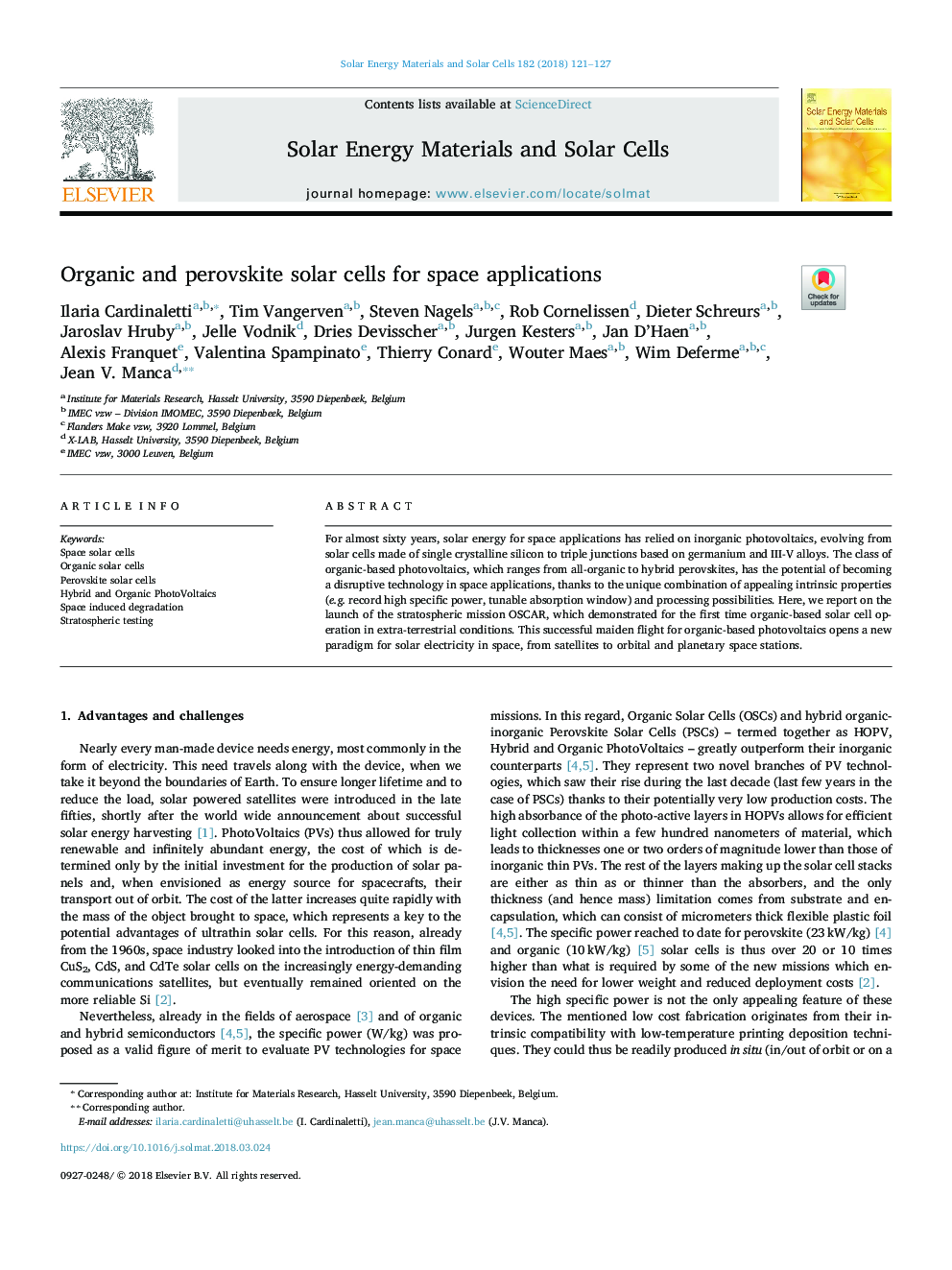| Article ID | Journal | Published Year | Pages | File Type |
|---|---|---|---|---|
| 6534122 | Solar Energy Materials and Solar Cells | 2018 | 7 Pages |
Abstract
For almost sixty years, solar energy for space applications has relied on inorganic photovoltaics, evolving from solar cells made of single crystalline silicon to triple junctions based on germanium and III-V alloys. The class of organic-based photovoltaics, which ranges from all-organic to hybrid perovskites, has the potential of becoming a disruptive technology in space applications, thanks to the unique combination of appealing intrinsic properties (e.g. record high specific power, tunable absorption window) and processing possibilities. Here, we report on the launch of the stratospheric mission OSCAR, which demonstrated for the first time organic-based solar cell operation in extra-terrestrial conditions. This successful maiden flight for organic-based photovoltaics opens a new paradigm for solar electricity in space, from satellites to orbital and planetary space stations.
Related Topics
Physical Sciences and Engineering
Chemical Engineering
Catalysis
Authors
Ilaria Cardinaletti, Tim Vangerven, Steven Nagels, Rob Cornelissen, Dieter Schreurs, Jaroslav Hruby, Jelle Vodnik, Dries Devisscher, Jurgen Kesters, Jan D'Haen, Alexis Franquet, Valentina Spampinato, Thierry Conard, Wouter Maes, Wim Deferme,
